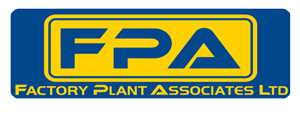The Machinery sector is an important part of the Engineering Industry. Machinery consists of an assembly of components, at least one of which moves, joined together for a specific application. The drive system of machinery is powered by energy other than human or animal effort.
EU Machinery Legislation
One of the main legislations governing the harmonisation of essential health and safety requirements for machinery at EU level is the Machinery Directive 2006/42/EC
The Directive:
- Promotes the free movement of machinery within the Single Market
- Guarantees a high level of protection for EU workers and citizens
Does your machine comply with the CE marking?
CE marking is the responsibility of the person who places the product on the market, or puts it into service, for the first time. In law this duty rests with the Responsible Person, which in most cases is either the manufacturer or the manufacturer’s authorised (in writing) representative, but can also include those who import non CE marked products into Europe, any user in Europe who makes a product for their own use, and those who modify existing products already in use to such an extent they must be considered “new” products.
What does the CE mark mean?
By affixing the CE mark the Responsible Person takes on responsibility for the conformity of the product. CE marking is a visible sign that the product complies with all relevant product supply law, and its presence together with the Declaration of Conformity gives the product to which it is affixed presumption of conformity with relevant product safety Directives. CE marked products are entitled to free movement throughout the European market (EU and EEA). However, the CE mark is not a quality mark, nor a guarantee that the product meets all of the requirements of relevant EU product safety law. Suppliers who install work equipment and users should make reasonable checks of any new products looking for obvious defects. Also the suppliers should ensure that there are User Instructions and that these and warning decals are in English if for the UK market. Where the instructions are not in English the supplier must provide a translation in to English and supply this together with the original instructions. In most cases the Declaration of Conformity must be supplied to the end customer (note: electrical equipment does not have to be accompanied by a Declaration of Conformity).
What is the CE marking process?
CE marking is the final stage of the conformity assessment process as specified in the relevant Directive for the product. The conformity assessment process (sometimes referred to as the CE marking process) is concerned with: assessing the risks presented by a product throughout its lifecycle meeting safety objectives by design and construction taking account of the current best practice to ensure the safety for that product, known as the state of the art in some cases the supply Directive will require the use of third parties who have been notified by an EU member state to the EU Commission (usually referred to as “Notified Bodies”) to verify compliance collecting and retaining information about the design, testing and construction process and the means by which the product complies with the essential requirements of all relevant product safety Directives in a technical file which in most cases must be kept for at least 10 years after the last product of the product line has been produced declaring the product’s conformity with all relevant product safety law by means of a document (the Declaration of Conformity), which in most cases must accompany the product down the supply chain to the end user and the preparation and provision of comprehensive product User Instructions, in the language of the end user.
